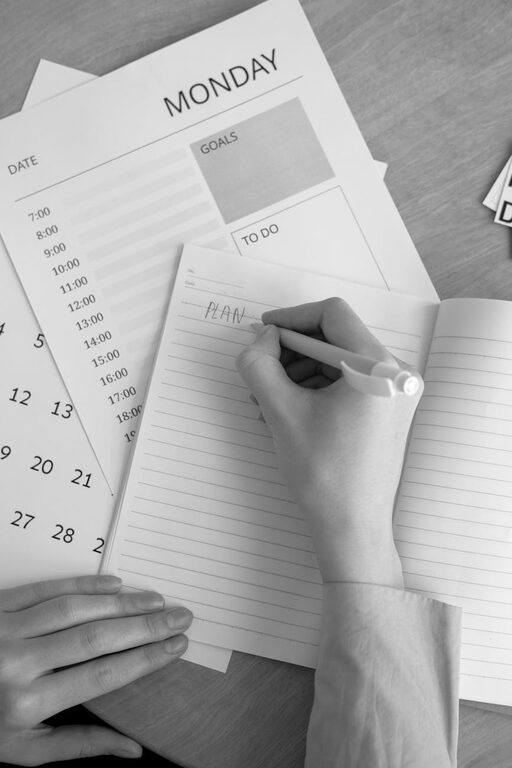Bullet journaling has grown in popularity as a flexible and creative way to organize tasks, track habits, and plan goals—all in one notebook. Whether you’re looking to increase productivity, cultivate mindfulness, or simply keep your daily life in order, bullet journaling can be a great fit. If you’re new to this system, this beginner’s guide will walk you through the essentials to get started with confidence.
What Is Bullet Journaling?
Bullet journaling, often called “BuJo,” is a customizable analog method for managing your life. It was created by Ryder Carroll, a digital product designer, as a way to combine a planner, to-do list, diary, and habit tracker into a single notebook.
At its core, bullet journaling uses simple symbols or “bullets” to organize information quickly and efficiently. It adapts to your needs, whether you want to track work projects, personal goals, daily routines, or creative ideas.
What You Need to Get Started
One of the great things about bullet journaling is that it doesn’t require fancy tools. Here’s what you’ll need:
– Notebook: Any notebook will do, but dotted or grid notebooks are popular because they help keep things neat.
– Pen or Pencil: Choose what feels comfortable for writing and drawing.
– Ruler (Optional): Can help create straight lines or grids.
– Colored Pens or Markers (Optional): For adding color and emphasis to your pages.
That’s it! You likely have everything you need at home already.
Key Components of a Bullet Journal
1. Index
The index acts as a table of contents for your bullet journal. It helps you quickly find different sections, collections, or logs inside your notebook. At the start, reserve a couple of pages for the index and update it as you add new content.
2. Future Log
This section is used for long-term planning. Break it into months or even quarters, and jot down important dates, deadlines, or events coming up over the year.
3. Monthly Log
Here, you can have a calendar view of a particular month and a task list. It gives you an overview of your monthly priorities and appointments.
4. Daily Log
Daily logs contain your to-do lists, notes, appointments, and anything else you want to track on a day-to-day basis. This is where the “bullets” come in handy.
5. Collections
Collections are any customized lists or logs you create that don’t fit into the daily, monthly, or future logs. Examples include habit trackers, book lists, meal plans, or mood trackers.
How to Use Bullets and Symbols
Bullet journaling uses simple symbols to categorize entries:
– Tasks: Represented by a dot (•)
– Events: Represented by an open circle (o)
– Notes: Represented by a dash (–)
To manage tasks, you can add:
– X to mark completed tasks
– > to migrate incomplete tasks to a future date
– < to schedule tasks from the future log to today
This simple system lets you quickly scan your pages to see what’s pending, what’s done, and what’s moved.
Step-by-Step Guide to Your First Bullet Journal Entry
- **Set Up the Index**: Reserve the first two pages for your index. You’ll fill this in as you create sections.
- **Create a Future Log**: Divide the next two pages into four or six sections for upcoming months and jot down important dates.
- **Design Your First Monthly Log**: Write the month at the top, list dates with their corresponding weekdays on one side, and a task list on the other.
- **Start Your Daily Log**: Write the date at the top, then add your tasks, events, and notes with the corresponding bullets.
- **Add Collections**: Add any personalized lists you want to track and include their page numbers in the index.
Tips for Making Bullet Journaling Work for You
– Keep it Simple at First: Don’t worry about elaborate decorations or layouts until you get comfortable.
– Customize Your System: Adjust keys, layouts, and sections as you discover what works best.
– Set Aside Time Daily or Weekly: Regularly updating your journal helps maintain organization.
– Use Color Coding Sparingly: Adding colors can help, but don’t overdo it, especially when starting out.
– Be Flexible: Your bullet journal can evolve—we all change habits and priorities over time.
Common Bullet Journal Practices to Explore
– Habit Trackers: A grid to check off daily habits like drinking water or exercise.
– Mood Trackers: Log your mood with colors or symbols to spot patterns.
– Gratitude Logs: Write a few things you’re grateful for each day.
– Brain Dumps: Use a page to jot down all your ideas or worries for mental clarity.
– Goal Setting: Break down big goals into smaller actionable steps within your journal.
Final Thoughts
Bullet journaling is an adaptable and mindful way to bring more structure and creativity into your everyday life. The beauty is in its flexibility—you can keep it as minimal or as artistic as you like. Starting your bullet journal can be a simple yet powerful habit that helps you stay organized, focused, and inspired.
Give it a try with just a notebook and pen. Over time, you’ll find your rhythm and style, making bullet journaling a personal tool for success.
Happy journaling!

